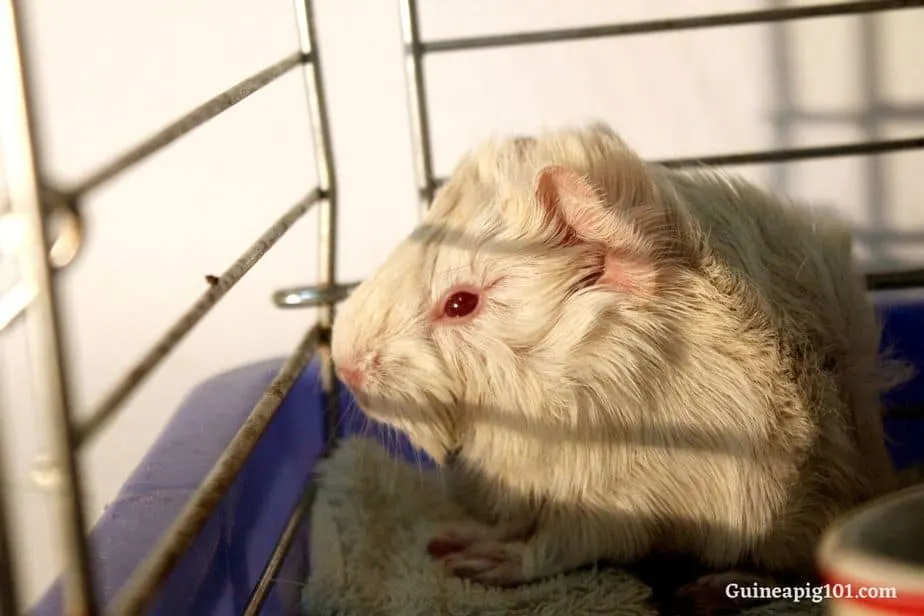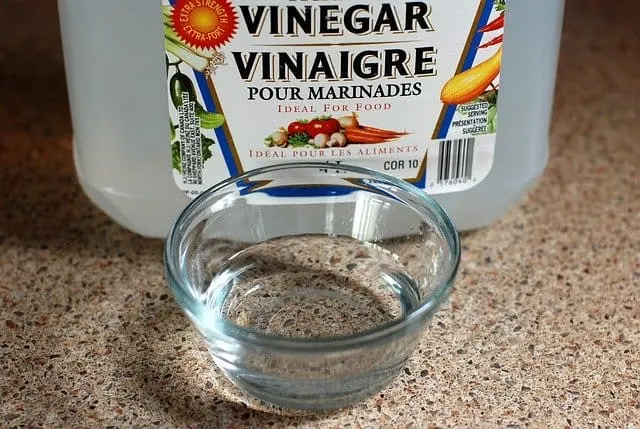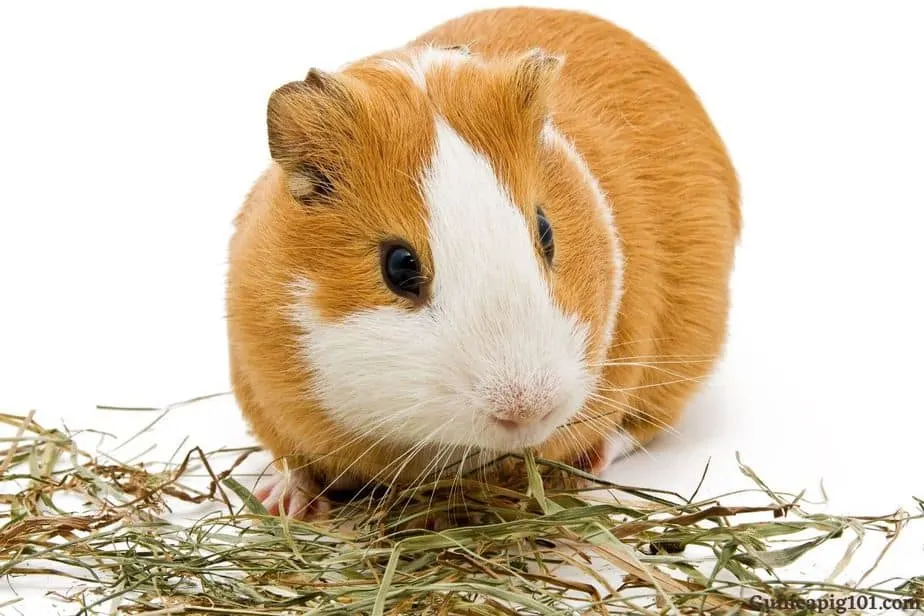Out of all potential threats that our guinea pigs go through every day, mold is one of the most stealthy. A Guinea pig can avoid predators or accidents, but mold cannot be avoided in certain circumstances. So it is crucial to know, can mold kill guinea pigs?
Mold can risk the life of your guinea pigs if exposed or consumed in large quantities. Sometimes it quickly results in respiratory infections. Other times it can cause significant damage to our guinea pig’s health by infection their internals organs like liver and kidney.
You can, however, avoid mold by providing a healthy environment to your guinea pig.
It would be best if you regularly remembered to remove every small bit mold while cleaning your guinea pigs’ cage.
You should always follow what your guinea pigs are eating and should check that they are not serving moldy hay or pellets.
Molds and Guinea pigs
You must keep your guinea pig away from the mold as it can risk your guinea pig’s life resulting in a threat to their life.
If they intake a good amount of mold, it can cause speedy respiratory failure.
Mold can also be a slow poison as it constantly damages the internal organs of our guinea pigs.
Sadly, guinea pigs are very good at hiding their illness as they are prey animals.
That gives your head all responsibilities as it should be your duty to make sure that your piggie is away from the mold.
You can figure it out by keeping an eye on their enclosure. That includes both the play area and their sweet home, as it does not take a long time for the mold to gain a foothold.
What makes mold so dangerous to guinea pigs?
Molds are of various types but most of them produce toxins known as mycotoxins.
These mycotoxins can lead to multiple health issues that are not good for our guinea pig.
Let’s have a look at some of the common health issues caused by mold in our guinea pigs:
- Aflatoxin: Consuming aflatoxin by guinea pig can cause significant health issues like growth retardation and cause changes in organ weight.
- It can also cause stomach pains and liver damage in long term exposure.
- It can also be called as the most common guinea pig killing mycotoxin.
- Ergot: This toxin attacks on the circulation of blood in the guinea pigs. By consuming this mycotoxin, guinea pigs can lose their mobility.
- Chaetomium and Stachybotrys Chartarum: These types of molds attack the immune system of our guinea pigs, which leads to various health issues in our guinea pigs.
So by the above description, we can conclude that molds can be hazardous to our guinea pigs’ health.
These are just a few examples, there can be a lot more problems if your guinea pig is exposed to mold for a long period.
You should always make sure that your guinea pigs are away from molds.
How do guinea pigs get exposed to mold?

Guinea pigs and humans are attracted to molds in the same manner.
The process starts with the mycotoxins, which find their direction into the air, and then your guinea pigs breathe them in. From here, the health issues take their place.
That is not only for the indoor guinea pigs as the guinea pigs housed outside also attract the mold in the same manner, and as they are outside our home, the chances of passing away increase.
Let us study some ways by which mold enters our guinea pigs life:
- Moldy guinea pig food.
- Moldy plants exist in your backyard.
- Inadequate flow of air in your guinea pigs cage.
- Unhygienic living standards.
You must know that guinea pigs cannot differentiate between a moldy and fresh food in the beginning. They are most likely to eat moldy food as fresh.
We recommend you to keep an eye on your guinea pig while they play in your yard and enjoy their floortime.
Plants, vegetables, grass, rocks, etc can also be the sources of mold. If your guinea pig consumes this, it can lead to terrible results.
It would be best if you also took care of your guinea pig’s living area.
On one hand, you want to keep them safe from drafts and predators by locking them tight.
On the other hand, They also require an adequate airflow flow because, without sufficient airflow, our guinea pig cage will turn into a breeding land for the mold.
Signs of mold poisoning in guinea pigs

Mold poisoning is also called as mycotoxin poisoning and has various types of symptoms.
As our guinea pigs are prey animals, they will not show their pain. So it would help if you found out what is wrong with your guinea pig.
You can consider it as mold poisoning if your guinea pigs show the below symptoms:
- Noticeable abdominal pain.
- Loss of appetite and connected weight loss. Your guinea pigs might reject food.
- Unexpected stomach disorder.
- Swelling in the facial area.
- Discharge from eyes and nose.
- Blood in the pee and poop.
- A decrease in body temperature.
Apart from all these noticeable symptoms, mycotoxin poisoning can also be detected by the test. You will need a vet for this who will run a check on our guinea pig’s blood, kidneys, and liver function.
Placement of guinea pig cage to prevent mold
If your guinea pigs have their sweet home inside the house, you will have to make sure the room has appropriate ventilation.
You must know that a cage that is placed against a wall may become damp. If there is no adequate amount of airflow, mold will make their house in the entire enclosure.
That takes us to the conclusion that you should always put the guinea pigs cage near an open window.
Sadly, placing your guinea pig’s cage near an open window will create drafts that make your guinea pig sad and uncomfortable.
Mold generally makes their home in places that lack proper air circulation.
As an outcome, there are fewer chances of getting mold if our guinea pigs cage is situated outdoors.
Placing the cage outdoors will provide sufficient flow of air, permitting the enclosure walls to breathe.
If in case your guinea pig cage is not correctly impenetrable, molds will make their home in the entire cage. Sunlights are beneficial in killing this, but it does not show good results in harsh winter.
The mold will then gradually capture the rest of the enclosure.
This will not only compromise the integrity of the setup, but it can dive inside as well. That can then give terrible results to your guinea pigs.
So the best way to house your guinea pig outside is to construct an outdoor cage that is well insulated.
That will protect your guinea pigs from all possible dangers.
Your guinea pigs cage will no longer be moist or moldy, and they will have the freedom to enjoy an adequate amount of airflow.
Can guinea pigs live in garage?
A well-situated outdoor cage is the best for our guinea pig to avoid vulnerability to mold. But you can’t place them outside for the whole year.
You should bring them inside in the colder months. When the mercury faces a downfall, many people relocate their guinea pigs undercover or garage.
But, the problems with such an area are that they are dark and contain humidity.
A place like this gives an invitation to the mold to make their home, and then due to the inadequate flow of air, your guinea pig will breathe in this mold.
So, we will advise you that before making a home for your guinea pig in such an area, kindly inspect the whole area correctly.
If you find any signs of mold, immediately change your decision and find any other shelter for your guinea pigs.
A golden rule of thumb is, guinea pigs must be housed in a well-ventilated space, permitting sunlight(not direct).
If your shed or workshop does not have this facility, we will suggest you not make a home for your guinea pig.
Because whether now or sometime in future molds will surely make a place over there, which can result in the risk of life for your guinea pig.
It would help if you always remembered that your ignorance could give terrible results to your guinea pig.
So considering the seriousness of the problem, you should always be aware of such devastating issues.
How to prevent mold inside a guinea pig hutch?
You can start with choosing the right location for your guinea pig to prevent their cage from becoming mold. But this is not the end of your responsibilities, though.
This very first thing to check is the gate of your guinea pigs cage.
Inspecting the airflow inside the enclosure as a lack of ventilation is one of the reasons for the molds.
You should also ensure the safety of your guinea pigs as any predators like wild foxes can easily pull apart a poorly setup wiring.
Use a reliable, Perspex cover as this will be helpful for your guinea pigs.
You must have to make sure that you leave some space for the circulation of air, considering that the inadequate amount of airflow can give an invitation to the molds, which can further give terrible results.
Once you follow the above process, you should look forward to cleaning.
Dirty bedding, litter pan, and their hay can turn into moldy in no time. So you must go through a proper cleaning process every week for at least one time.
You must take care of spot cleaning every day and ensure that your guinea pigs are litter trained.
It would be best if you always served fresh hay every day to your guinea pig by replacing the old hay.
Soiled bedding and litter tray should also be changed regularly. As soon as it is heavily soiled, it would help if you cleaned your guinea pig’s litter tray and bed.
If you are successful in following the schedule with no sort of carelessness and ignorance, you can avoid molds in your guinea pigs cage.
Sadly, even after taking all the precautions, there are chances for the molds to appear. As soon as you detect molds in your guinea pigs cage, clean it immediately.
You should always provide a safe and hygienic environment to your guinea pig as an unclean environment can give invitations to many serious health issues.
How to get rid of mold from a guinea pig cage?

If you ever notice mold inside your guinea pig’s cage, do not ignore it else, it can lead to serious health issues.
As soon as you discover mold inside the hutch, remove it immediately.
After removing the mold, you will have to work on the cleaning process. Try to apply any of the following methods or amalgamation of all.
- Use Disinfectant made by Accel: This product is used in many surgeries and is also considered as an animal doctor’s standard.
- Use diluted bleach: You can take the ratio of 1:5 of bleach and water. Consider power-hosing after using bleach. It will help in minimizing the smell.
- Use a mix of undiluted vinegar and use a spray bottle to spray it all around, if you can mix baking soda it will be more beneficial as it will help in cleaning it out easily.
It would be best if you remembered to dry clean your guinea pigs hutch after sending them back to their home.
Prefer to wipe them with natural sunlight. Once the hutch is adequately dried, your guinea pig can get back to the safe and hygienic environment.
You should continuously keep an eye on the guinea pigs hutch, even though you have removed the mold as there are chances of the mold appearing back.
Ignorance on such important terms can not only affect the health of your guinea pigs but can also risk their life resulting in life threats.
How to avoid moldy guinea pig pellets?
Pellets are a high source of fiber, which provides numerous benefits to our guinea pigs.
The sad part is that they get moldy in no time, so we will not suggest you risk with the guinea piglets.
We would advise you to buy the best quality of pellets that you can afford as we should not compromise in the diet of our guinea pig.
It would help if you examined the bag accurately before serving it to your guinea pig. If the pellets are discolored or smell badly, immediately throw them away. Such pellets should be kept far from our guinea pigs.
Try not to buy pellets in advance as small bags work well.
We can understand that purchasing small bags can increase your trip to the market, but we can do it for our baby piggie as we love them.
And buying small bags instead of the larger one is more beneficial as pellets can be moldy very soon. You stock them in an airtight container away from direct sunlight.
Once your guinea pig turns into an adult, the pellet requirement decreases. A good supply of hay and veggies will be sufficient. It would help if you watched the sign of mold in these too.
How to avoid moldy guinea pig hay

As your guinea pigs grow up, hay becomes an essential part of their diet. Guinea pigs can have hay every day as it provides them with many nutritional benefits.
But unfortunately, moldy hay works as a poison for them. The storage of guinea pigs hay should always be in a cool and dry place. If you don’t have a pantry for storage, you can use garbage.
Never store your hay where there are chances of water, as water makes the hay moldy. If your hay is wet, you should replace them immediately.
Wet hay should never be served to our guinea pigs as it can have molds, which can give terrible results to our guinea pigs.
You should make sure that the hay is replaced daily as it is the only way to maintain its freshness and to keep it safe.
If you try to serve fresh hay on the top of the old one, your guinea pig will try to dig it and finally reach the moldy hay and eat it.
How to avoid moldy vegetables and fruits?
We will recommend you to avoid feeding your guinea pig any vegetable of the expired date as it is not safe for them.
Because some guinea pigs have the habit of hiding their food for later.
That points out towards the seriousness of the problem as once the vegetable is buried in the hay, it is not fresh anymore. It will turn moldy even faster, which can be terrible for our guinea pig’s health.
You must keep an eye on the guinea pig’s cage very often for any leftover fruits or vegetables. As soon as you serve them with the fresh one, remove the old one immediately.
Avoiding moldy trees and leaves
Whenever your guinea pigs enjoy their playtime in the yard, they may get closer to the plant and leaves as they will walk around your yard searching for stuff to eat.
But this can be devastating if your yard is in contact with the mold.
Whether it is a fuzzy mold or a black mold, the intensity of health issues remain the same.
So we will advise you to examine your yard correctly, and if there are molds, then clean them immediately before letting your guinea pigs into the yard.
You should never take mold lightly as it is a guinea pig killer. You must be very much aware of molds contacting your guinea pig as it can risk the life of our guinea pigs.
Lastly, we would advise you to take care of your piggies and always try to provide them a safe and hygienic environment as unhygienic surroundings are the root of many health issues.
In addition to this, always shower them with all your love and care.
Source: Indoor Mold, Toxigenic Fungi, and Stachybotrys chartarum: Infectious Disease Perspective
